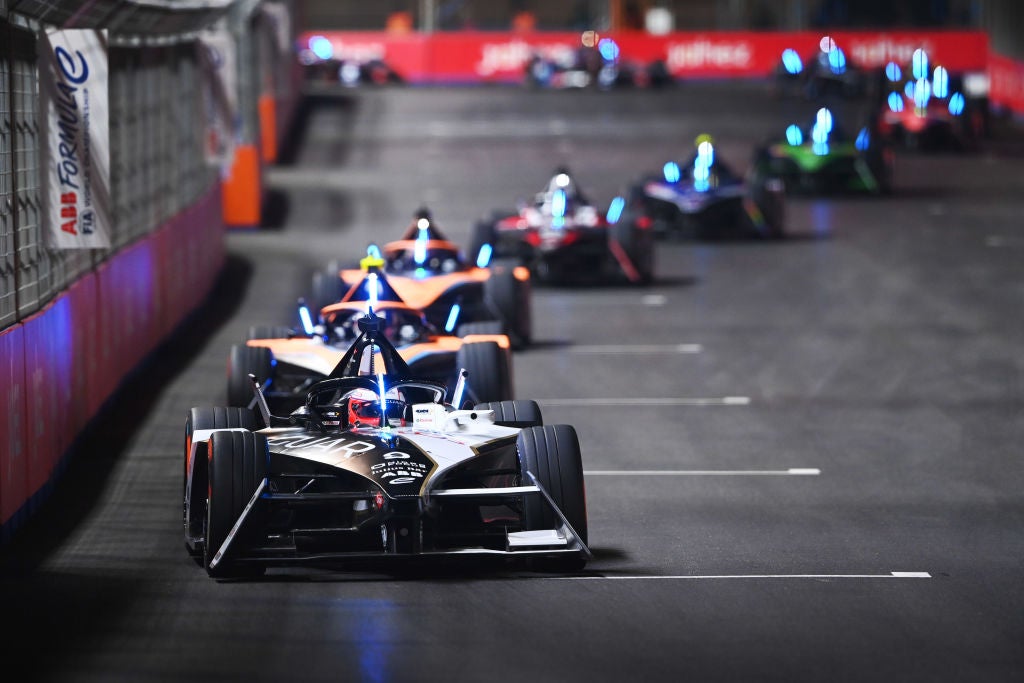
A little over eight months ago, the FIA proudly announced the newest beast in the Formula E armoury: the third generation of race cars in the all-electric championship, the giant leap forward which would be a milestone in the series’ progress towards being a tier one sport.
That Gen3 EV is now three races, and lots of testing, into its lifespan - one intended to run for four years all told. It isn’t just about making the cars smaller and lighter (both achieved) or even faster (somewhat up for debate), but also about increasing their efficiency.
In fact, the FIA proclaimed the Gen3 to be both the world’s first net zero carbon race car and also the “most powerful and efficient electric race car ever built”.
Given the championship’s already-established track record of transferring race week data into real-world improvements for EVs sold by manufacturers involved in the series, it was quite the claim in both a sporting and wider commercial sense. But it’s also now increasingly being shown to be not just a claim, but an achievement.
“We’re only three races in and it depends on the teams’ efficiency storing it, but it ranges from 40 to 50 per cent of energy used throughout the race coming from the regenerative part - it’s massive.” Such was the blunt assessment of just how successful the Gen3 has been from an efficiency perspective, coming from one of the most informed sources available: Alessandra Ciliberti, the FIA’s technical manager responsible for bringing the Gen3 plans to life.
Ciliberti, a mechanical and automotive engineer who previously worked in BMW’s electric vehicles department, has played a key role in transitioning the new race cars from a list of requirements and a technical brief to a viable vehicle on the track.
Her current role leading Formula E from a technical standpoint means the most critical part of the job has been two years developing the Gen3 cars. “It has been a big project, enabling me to get close to cutting-edge technology,” she told the Independent. “Basically it’s an electric motor and you make it work in the opposite direction. You use it to propel the car, but in the regen it works inverse, to get energy from the wheels, back into the motor and back to the battery. It’s the opposite use of the same hardware.”
All explained in a very offhand way, naturally, for someone to whom such feats of engineering are doubtless second nature.

For those less-inclined or less-adept at solving electrical and mechanical complexities on the fly, a little more detail on where the added efficiencies have precisely been sought is required.
A coherent explanation is quickly forthcoming, as Formula E’s vehicular masterplan becomes clearer - as does the technology which will trickle down into commercial cars. “It comes from the fact we are regenerating energy while braking. You’re not wasting energy with conventional hydraulic brake systems. And it’s even more because in Gen3 we added the front powertrain. It’s the first single-seater to have one.
“Both front and rear axles regenerate while braking - up to 600kw in total. Much of the energy you use during the race is not stored in the battery from the beginning - if not, the battery would be too big.
“So we leverage the efficiency of braking technology which allows the cars to go faster and further without needing the extra cells in a battery: the more cells you have, the more volume. That’s not feasible for a motorsport car.”
Again it’s a case of mission accomplished already in that regard, with the leaner Gen3 looking impressive in Mexico City and Diriyah so far.

But while size and speed matter in visual terms for those watching from afar, there’s a race and a championship to be won.
For the teams, and increasingly in the Gen3 era, race strategy is this year playing a huge role with regards to when they utilise their Attack Mode - increased power for short periods of time - and energy management is central to everything in Formula E.
While the body of the car itself is standardised, the open technology aspect means the rear powertrain is up to manufacturers to develop along with the software they utilise. The capacity to regenerate maximum energy during the race is - along with driving talent and decision-making, clearly - what can give the edge and make the difference, turning near-misses into points and points into podium spots.
And there’s more to come. Ciliberti notes that while the powertrains have been hugely upgraded, car performance will continue to increase the more data is gathered and the more teams get to grips with the combination of new car, tyres, equipment and even new race locations.
“Gen2 only had the rear powertrain and it regenerated 250kw. We have increased the rear to 350kw and then we added 250kw on the front, taking us from 25-30 per cent regeneration efficiency in Gen2 to almost 50 per cent in Gen3.
“What we are seeing is that we still have a lot to leverage on from the cars’ performance. That’s normal because we introduced it in a record time so manufacturers have this new equipment and put their own parts in - you have to give it a bit of time for performance to reach a ceiling. We’re going the right way, but there’s more to do.”
Always, there’s more to do - that’s the nature of competitive sport, let alone technology. Ciliberti is working at the intersection of both, and as a self-confessed motorsport fan there’s surely satisfaction to take from seeing the finished article on track?

As it turns out, the answer is yes, albeit with both initial trepidation and an acceptance that the wheels of progress keep turning.
“It was exciting, the moment I walked through with the cars on the grid walk before the race, it was quite an emotional moment!” she said.
“Once the first event was over we were happy; still we have challenges as we move along but every race is a bit more happiness for the job we have done.”
Except, as she points out herself, the job is never really done. Gen3 is in a handover phase and Gen4 discussions are already live.
By its very nature, cutting-edge technology doesn’t reach an end point. And given the evident enthusiasm and insight for what has been learned and applied, you suspect the FIA’s technical lead wouldn’t have it any other way.
--
:: Buy tickets for the 2023 Hankook London E-Prix on Saturday 29 & Sunday 30 July by visiting the Formula E website.







